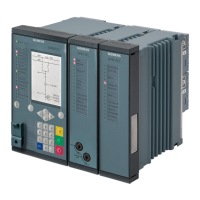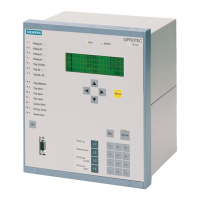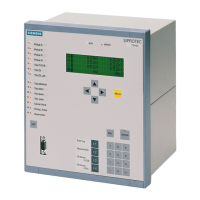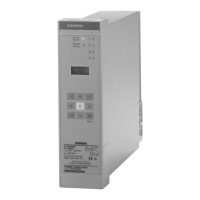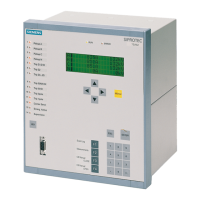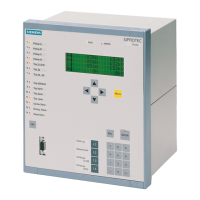Functions
2.19 Impedance Protection (ANSI 21)
SIPROTEC, 7UM62, Manual
C53000-G1176-C149-7, Release date 03.2010
157
2.19.2 Power Swing Blocking
General
Dynamic occurrences such as sudden load changes, short circuits, automatic reclosure or switching operations
within the power system may cause power swings. Therefore impedance protection is complemented by a
power swing blocking function to avoid spurious tripping.
Power swings are three-phase symmetrical occurrences. The first prerequisite is therefore effective symmetry
of the three phase currents, which is verified by evaluation of the negative sequence current. This means that
asymmetrical (all single-phase and two-phase) short circuits cannot cause the power swing blocking to pick up.
Even if a power swing has been detected, the asymmetrical short-circuits following it quickly deactivate the
power swing blocking and make tripping by impedance protection possible. Since a power swing happens
much more slowly than a short-circuit, the rate of change of the impedance is a reliable criterion for its identifi-
cation. Because of its symmetrical nature, the positive sequence impedance obtained from the positive se-
quence components of the currents and voltages is evaluated.
Logic
The figure below shows the logic diagram for the power swing block. The upper section shows the current sym-
metry monitoring. An enable signal is given if there is a three-pole pickup with no negative sequence system
current. For detection of power swings, a power swing polygon (P/SPOL) is used which is greater than the trip
polygon (TPOL). The distance between the two polygons can be set (common setting for R and X direction).
The user can choose for each setting parameter whether the trip polygon refers only to characteristic Z1 or to
characteristics Z1 & Z2. In the latter case, the trip polygon is the maximum impedance value.
Measuring Principle
The criterion for power swing blocking is composed of the power swing polygon, its distance to the trip polygon,
the trip polygon itself and the rate of change of the impedance. The first impedance value after entering the
power swing polygon (instant Tent) is compared with the last value outside the polygon (instant Tent-Δt). The
time Δt is determined by the measuring interval which is one cycle. If the impedance vector rate of change thus
determined is less than a set value ΔZ/Δt, a power swing is detected. The impedance stage is not blocked, how-
ever, until the impedance vector enters the trip polygon TPOL.
If the first impedance value is both inside the P/SPOL and the TPOL, the protection detects immediately a
short-circuit, because there must be at least one impedance value between the P/SPOL and the TPOL. The
distance between the power swing polygon P/SPOL and the trip polygon TPOL, and the rate of change ΔZ/Δt
are matched to one another in such a way that power swings are reliably detected and the desired impedance
zone (Z1 or Z1 & Z2) of the impedance protection is blocked. The blocking remains effective until the measured
impedance vector has exited the trip polygon or power swing polygon, the change rate is exceeded, or asym-
metrical power conditions rule out the possibility of a power swing. The power swing blocking time is also limited
by a parameter setting (T-ACTION P/S).
Blocking of the Impedance Stages
Power swing blocking is mostly used for impedance stage Z1, because the delay time T1 for this stage is set
low. Accordingly, a high delay time T2 must be set high for zone Z2. In the overreach zone Z1B no power swings
can occur by definition, since the network breaker is open and there is thus no second machine for power
swings. Likewise, the power swing blocking does not block the non-directional overcurrent stage (T3).
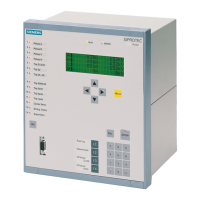
